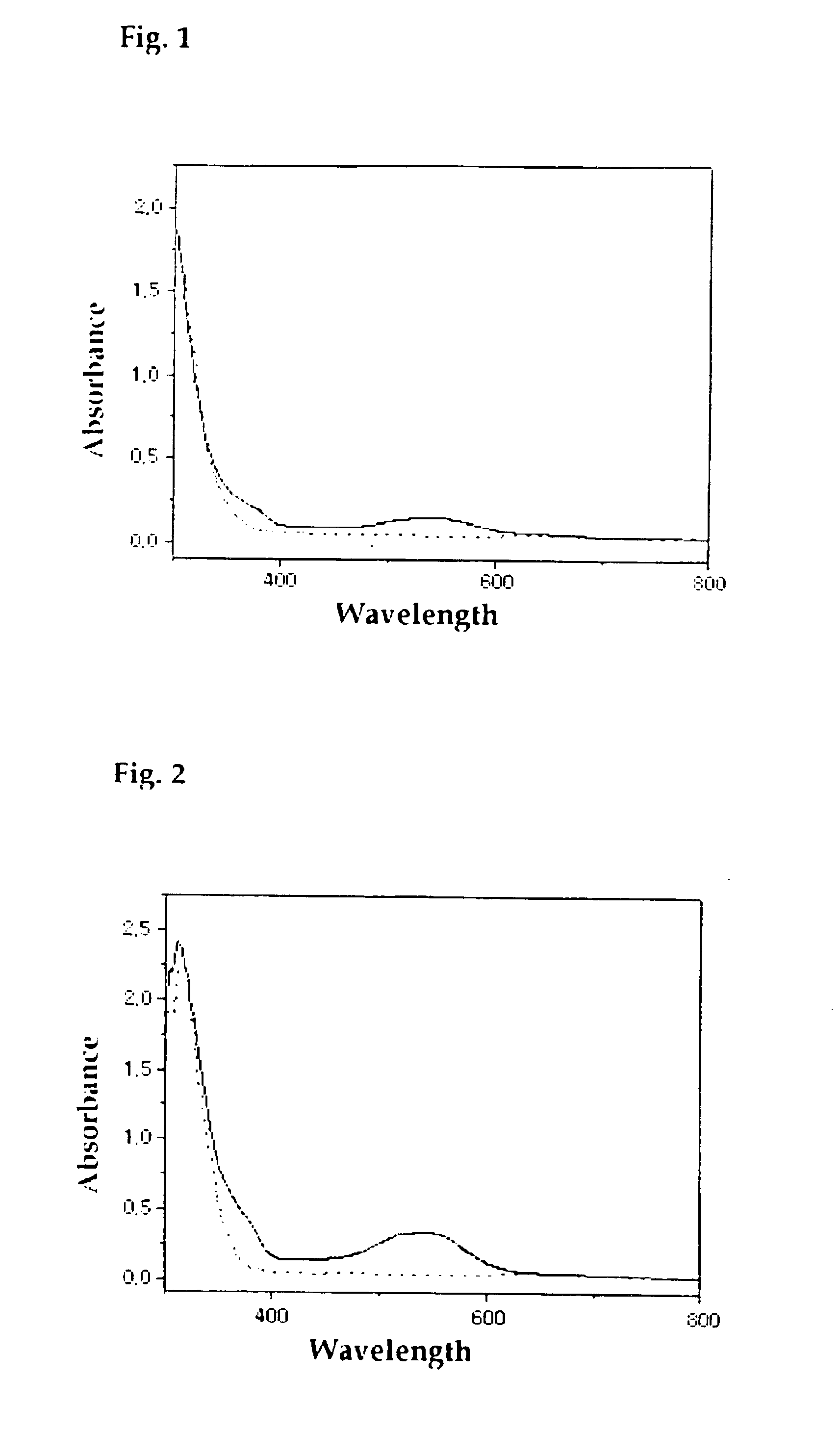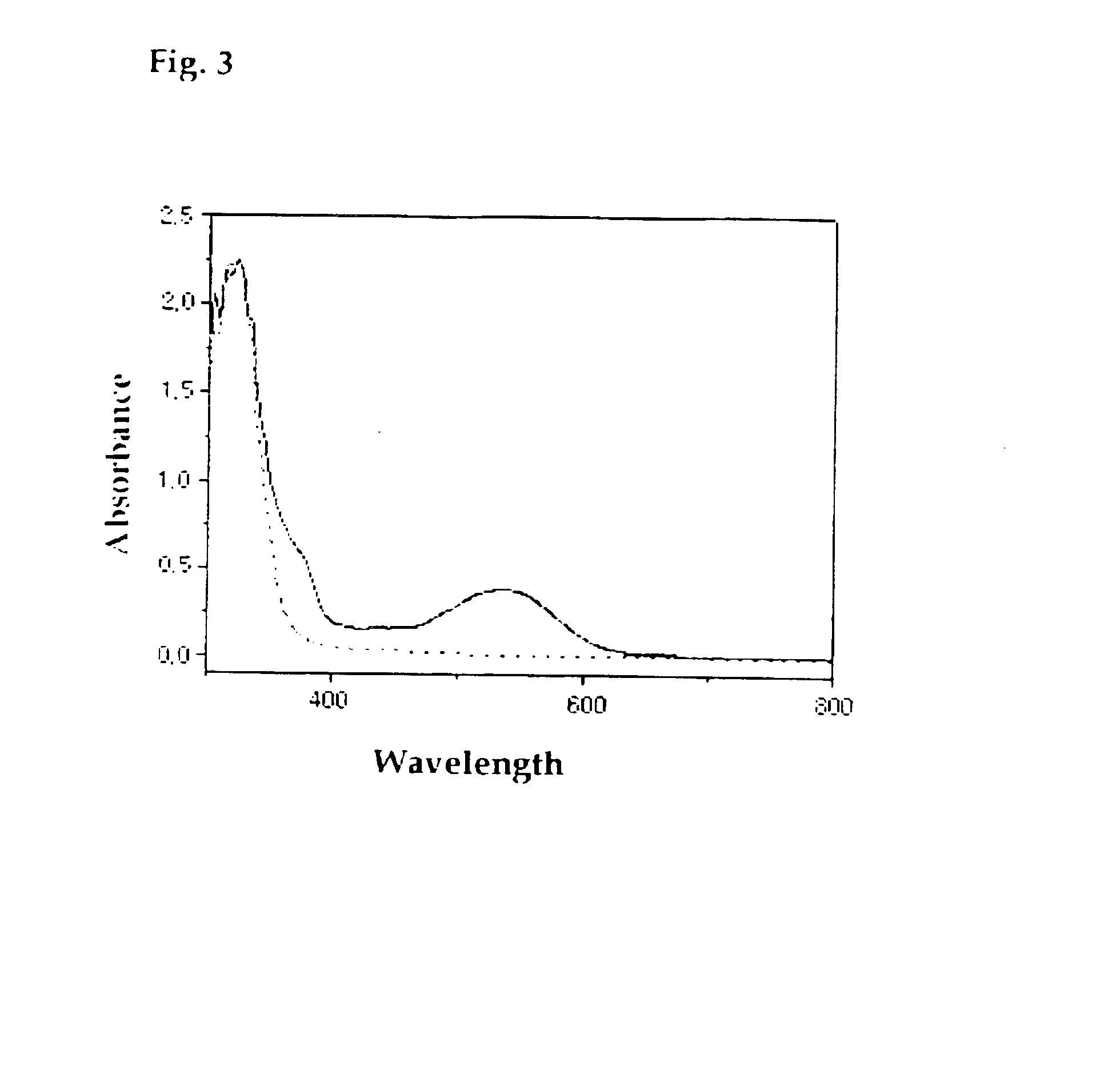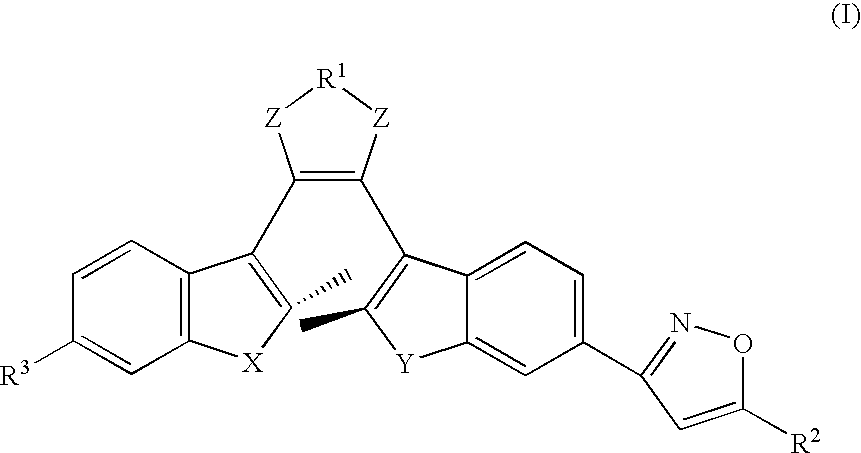Photochromic diarylethene substituted with isoxazole group
a photochromic diarylethenes and isoxazole technology, applied in the field of photochromic diarylethenes substituted with isoxazole group, can solve the problems of inability to meet the needs of optical recording materials, etc., to achieve the effect of better photochromic
- Summary
- Abstract
- Description
- Claims
- Application Information
AI Technical Summary
Benefits of technology
Problems solved by technology
Method used
Image
Examples
example 1
Preparation of 1-(6′-oxymoyl-2′-methylbenzo[b]thiophen-3′-yl)-2-(2″-methylbenzo[b]thiophen-3″-yl)hexafluorocyclopentene (OMBTF6)
1-(6′-formyl-2′-methylbenzo[b]thiophen-3′-yl)-2-(2″-methylbenzo[b]thiophen-3″-yl)hexafluorocyclopentene (FMBTF6) (3 g) was dissolved in 50 mL of ethanol. NH2OH—HCI (0.63 g) was added and the mixture solution was stirred for 10 min. NaOH (0.36 g) dissolved in 1 mL of water was dropped into the mixture. After the reaction was completed, the reaction mixture was extracted with methylene chloride. The combined organic layer was dried over MgSO4, and evaporated in vacu to dryness. The crude product was purified by Flash chromatography (ethylacetate / hexane=1 / 7) to obtain the desired product, OMBTF6(2.0 g,65%).
1H NMR (200 MHz, CDCl3)δ 1.73 (s, 1H), 2.21 (s, 3H), 2.49 (s, 3H), 7.17-7.45 (m, 2H), 7.54-7.83 (m, 5H), 8.20 (s, 1H);
MS m / z 511 (M+, 100), 493 (18), 478 (5), 464 (26), 419 (10)
example 2
Preparation of 1-(6′-chloro-oxymoyl-2′,2′-methylbenzo[b]thiophen-3′-yl)-2-(2″-methylbenzo[b]thiophen-3″-yl)hexafluorocyclopentene (COMBTF6)
OMBTF6(1.3 g) prepared in Example 1 was dissolved in 30 mL of DMF and cooled to 0° C. N-chlorosuccinimide (0.51 g) was dropped slowly to the reaction mixture. The reaction mixture was left to room temperature and then extracted with methylene chloride. The combined organic layer was washed with NaCl solution, dried over MgSO4, and evaporated in vacu to dryness to obtain the product, COMBTF6(1.26 g, 91%).
example 3
Preparation of 1-(6′-(5-hydroxymethylisoxazol)-2′-methylbenzo[b]thiophen-3′-yl)-2-(2″-methylbenzo[b]thiophen-3′-yl)hexafluorocyclopentene (IMBTF6)
CMBTF6(1.26 g) prepared in Example 2 is dissolved in 20 mL of methylene chloride and cooled to 0° C. Propargyl alcohol (0.26 g) was added and then triethylamine (0.47 g) was dropped slowly to the reaction solution. The reaction mixture was left to room temperature and then extracted with methylene chloride. The combined organic layer was washed with NaCl solution, dried over MgSO4, and evaporated in vacu to dryness. The crude product was purified by Flash chromatography (ethylacetate / hexane=1 / 5) to obtain the product, IMBTF6 (74%).
1H NMR (200 MHz, CDCl3) δ 1.70 (s, 1H), 2.23 (s, 1H), 2.50 (s, 1H), 4.84 (s, 2H), 6.60 (s, 1H), 7.16-7.41 (m, 2H), 7.50-7.83 (m, 4H), 8.12 (s, 1H);
MS m / z 565 (M+, 100), 550 (6), 534 (25), 506 (9), 495 (3)
PUM
| Property | Measurement | Unit |
|---|---|---|
| Fraction | aaaaa | aaaaa |
| Fraction | aaaaa | aaaaa |
| Length | aaaaa | aaaaa |
Abstract
Description
Claims
Application Information
 Login to View More
Login to View More - R&D
- Intellectual Property
- Life Sciences
- Materials
- Tech Scout
- Unparalleled Data Quality
- Higher Quality Content
- 60% Fewer Hallucinations
Browse by: Latest US Patents, China's latest patents, Technical Efficacy Thesaurus, Application Domain, Technology Topic, Popular Technical Reports.
© 2025 PatSnap. All rights reserved.Legal|Privacy policy|Modern Slavery Act Transparency Statement|Sitemap|About US| Contact US: help@patsnap.com



